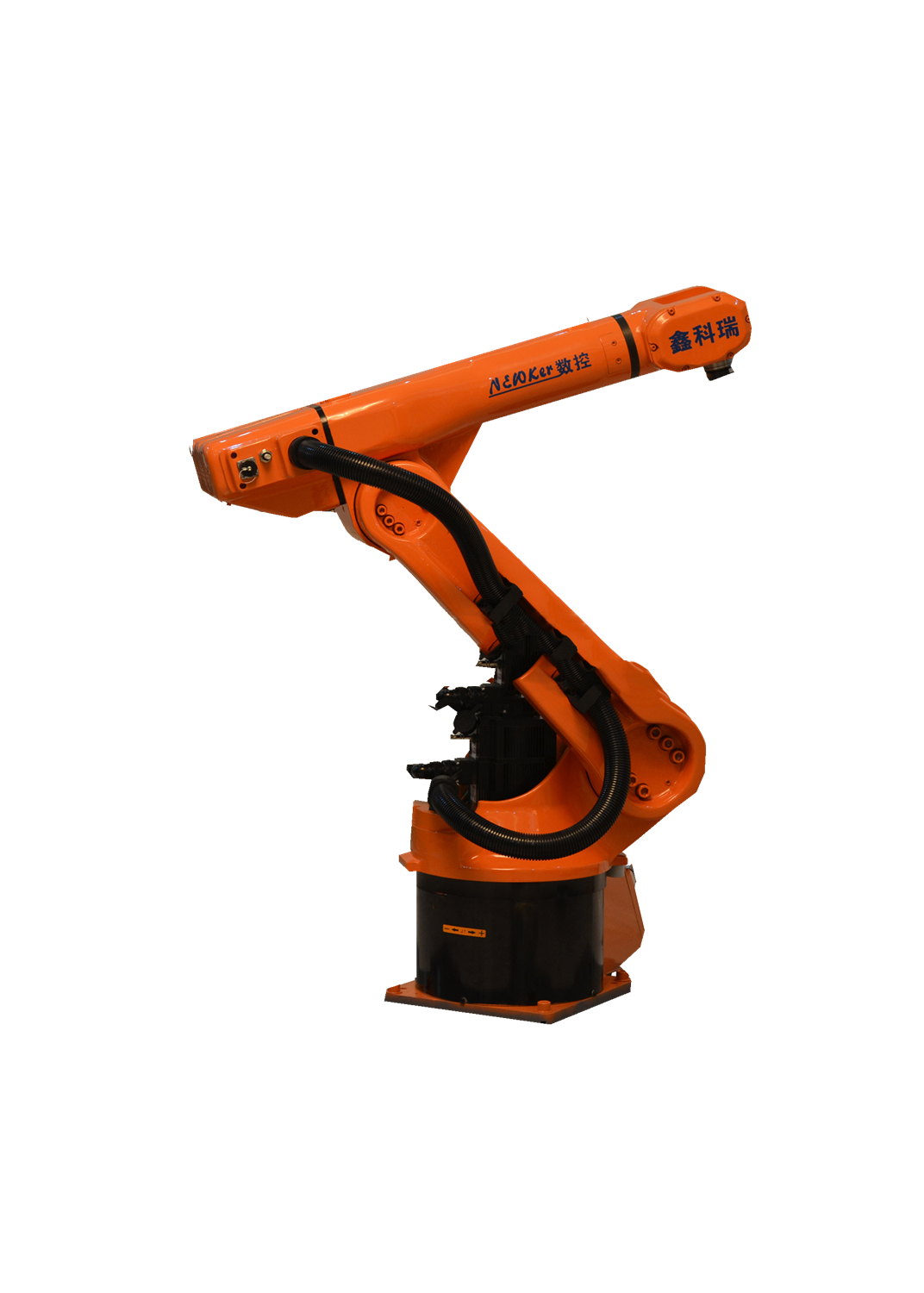According to the mechanical structure, industrial robots can be divided into multi-joint robots, planar multi-joint (SCARA) robots, parallel robots, rectangular coordinate robots, cylindrical coordinate robots and collaborative robots.
1.Articulated robots
Articulated robots (multi-joint robots) are one of the most widely used types of industrial robots. Its mechanical structure is similar to a human arm. The arms are connected to the base by twist joints. The number of rotational joints connecting the links in the arm can vary from two to ten joints, each providing an additional degree of freedom. The joints can be parallel or orthogonal to each other. Articulated robots with six degrees of freedom are the more commonly used industrial robots because their design provides a lot of flexibility. The main advantages of articulated robots are their high speeds and their very small footprint.
2.SCARA robots
SCARA robot has a circular working range consisting of two parallel joints that provide adaptability in a selected plane. The axis of rotation is positioned vertically and the end effector mounted on the arm moves horizontally. SCARA robots specialize in lateral motion and are primarily used in assembly applications. SCARA robots can move faster and are easier to integrate than cylindrical and Cartesian robots.
3.Parallel robots
A parallel robot is also called a parallel link robot because it consists of parallel jointed links connected to a common base. Due to the direct control of each joint on the end effector, the positioning of the end effector can be easily controlled by its arm, enabling high-speed operation. Parallel robots have a dome-shaped workspace. Parallel robots are often used in fast pick and place or product transfer applications. Its main functions include grabbing, packaging, palletizing and loading and unloading of machine tools.
4.Cartesian, gantry, linear robots
Cartesian robots, also known as linear robots or gantry robots, have a rectangular structure. These types of industrial robots have three prismatic joints that provide linear motion by sliding on their three vertical axes (X, Y, and Z). They may also have attached wrists to allow rotational movement. Cartesian robots are used in most industrial applications because they offer flexibility in configuration to suit specific application needs. Cartesian robots offer high positioning accuracy as well as their ability to withstand heavy objects.
5.Cylindrical robots
Cylindrical coordinate type robots have at the base at least one revolving joint and at least one prismatic joint connecting the links. These robots have a cylindrical workspace with a pivot and a retractable arm that can vertically and slide. Therefore, a robot of cylindrical structure provides vertical and horizontal linear motion as well as rotational motion around a vertical axis. The compact design at the end of the arm enables industrial robots to reach tight working envelopes without loss of speed and repeatability. It is primarily intended for simple applications of picking, rotating and placing materials.
6.Cooperative robot
Collaborative robots are robots designed to interact with humans in shared spaces or work safely nearby. In contrast to conventional industrial robots, which are designed to work autonomously and safely by isolating them from human contact. Cobot safety may depend on lightweight construction materials, rounded edges, and speed or force limitations. Security may also require sensors and software to ensure good collaborative behavior. Collaborative service robots can perform a variety of functions, including information robots in public places; logistics robots that transport materials in buildings to inspection robots equipped with cameras and vision processing technology, which can be used in a variety of applications such as Patrol the perimeter of secure facilities. Collaborative industrial robots can be used to automate repetitive, non-ergonomic tasks—for example, picking and placing heavy parts, machine feeding, and final assembly.
Post time: Jan-11-2023








